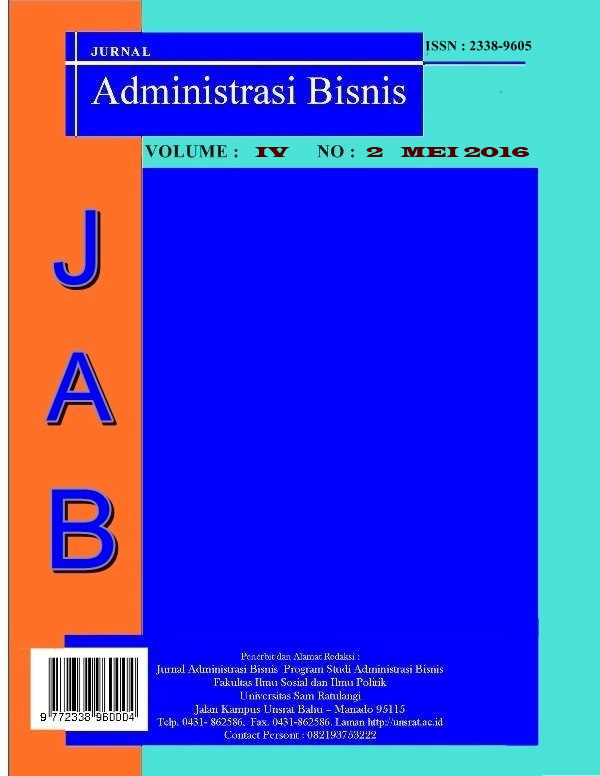ANALISIS KINERJA KEUANGAN PADA PT. ASTRA INTERNATIONAL, TBK
DOI:
https://doi.org/10.35797/jab.v4.i2.%25pAbstract
Abstract. This study aimed to analyze the financial performance of PT. Astra International Tbk based Ratios Liquidity, Solvency and Profitability ". This study used quantitative descriptive approach. The results showed that: (1) The liquidity ratio to measure the ability of PT Astra International Tbk in meeting short-term obligations through indicators Current Ratio, Quick Ratio and Cash Ratio is in the category of performance "pretty good" when compared to the average industry standards , (2) Solvency Ratio to measure the ability of firms to pay long-term liabilities if the company is liquidated, through indicators Debt to Equity Ratio (DER) and Debt to Total Asset Ratio (DAR) showed a tendency to decrease year after year and are slightly above average -rata industry standards so that it can be categorized performing "pretty well". (3) Ratios Profitability through indicators Gross Profit Margin (GPM), Return on Equity (ROE) and Net Profit Margin (NPM), it shows the tendency continues to decline from year to year hiatus last five years. It can be concluded that all three indicators bearada below the average industry standard, so it can be concluded that the financial performance. Astra International Tbk is in the category of "less good". It is recommended that the management of double the current assets, total assets (total assets) on the one hand and on the other hand, reducing the current debt and total debt while monitoring the company's operations through operating efficiency measures so that company profits will continue to rise.Keywords: Financial Performance, Liquidity, Solvency and Profitability.
Downloads
Published
02-05-2016
How to Cite
S.F. Supit, T., A. Areros, W. ., & .R.E. Tampi, J. (2016). ANALISIS KINERJA KEUANGAN PADA PT. ASTRA INTERNATIONAL, TBK. JURNAL ADMINISTRASI BISNIS (JAB), 4(2). https://doi.org/10.35797/jab.v4.i2.%p
Issue
Section
Articles



